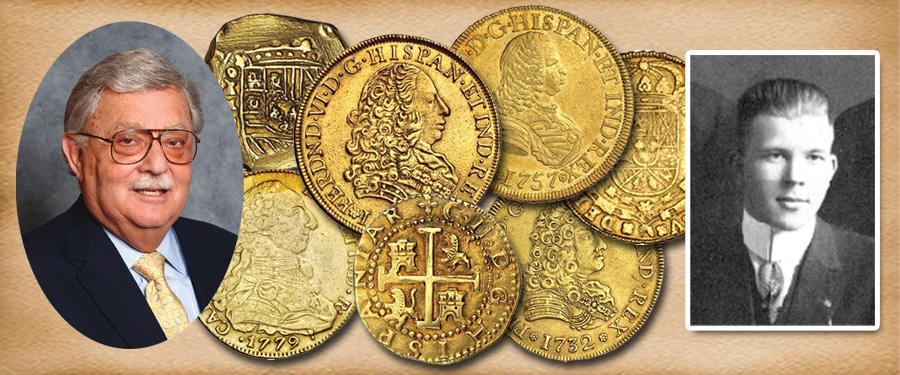
During the balance of the spring and summer of 1955 we continued to seek out more missing links for the Lilly Collection.
According to the Wayte Raymond Catalog of Spanish American Gold Coins there were over 500 Doubloons from Central and South America, since most countries had several mints near the respective gold sources. We searched auction sales and dealer price lists for possible additions. We wrote to collectors to ask if they wanted to sell their collections or duplicates and let them know we were working on a major collection.
We continued our acquisitions, advising Mr. Lilly during the summer and early fall of our progress. In the U.S. series we needed only a few early half eagles and eagles as the Weihman Collection was quite complete. However, we knew acquiring these rarer dates would take time. With the Schermerhorn Collection and other finds, among the $20 gold coins all we needed was a 1926-S to be complete from 1850 to 1932. With the number of scarce dates of the Saint-Gaudens design being found in banks in Europe, we were astonished that we could not find a 1926-S to complete the set.
It was puzzling to be unable to find this date as several million were struck, similar to others in the general time frame, but the others were available from the overseas banks. We assumed the 1926-S double eagles must exist somewhere.
In the fall of the year we ran several ads in The Numismatist stating: “$500 Reward for anyone who can tell us where we can find and purchase a 1926-S double eagle ($20 gold) for $3,000.” The price we offered, together with the reward, was substantially above the suggested market value as published at the time. But we had to do something to flush out an example.
When J.K. Lilly made his customary visit to Stack’s on his way to Florida late that fall, we told him of our actions and he said that he too wanted to finish that set. We discussed the new coins we acquired, and he liked our progress. He asked what could be added to his collection to make it more complete than others had attained. We suggested that he could consider adding the Pioneer and Territorial Coins of the United States, and even go back the ancient and medieval world and the gold coins that were part of those monetary systems.
He asked how far back, and we told him of coins of Lydia struck in 700 B.C., and also a few gold Staters of Greece and some Denarii of Ancient Rome. In fact, we had in stock in our showcase a set of Roman gold struck by the 12 Caesars that really intrigued him. He decided that we should go back as far as we could.
J.K. Lilly departed, after thanking us for the progress we had made and also for keeping his collecting endeavors private, which of course we had done from the very first day. He bid us a warm goodbye, wished us a good winter and asked that we make our customary late spring delivery to Indianapolis.





